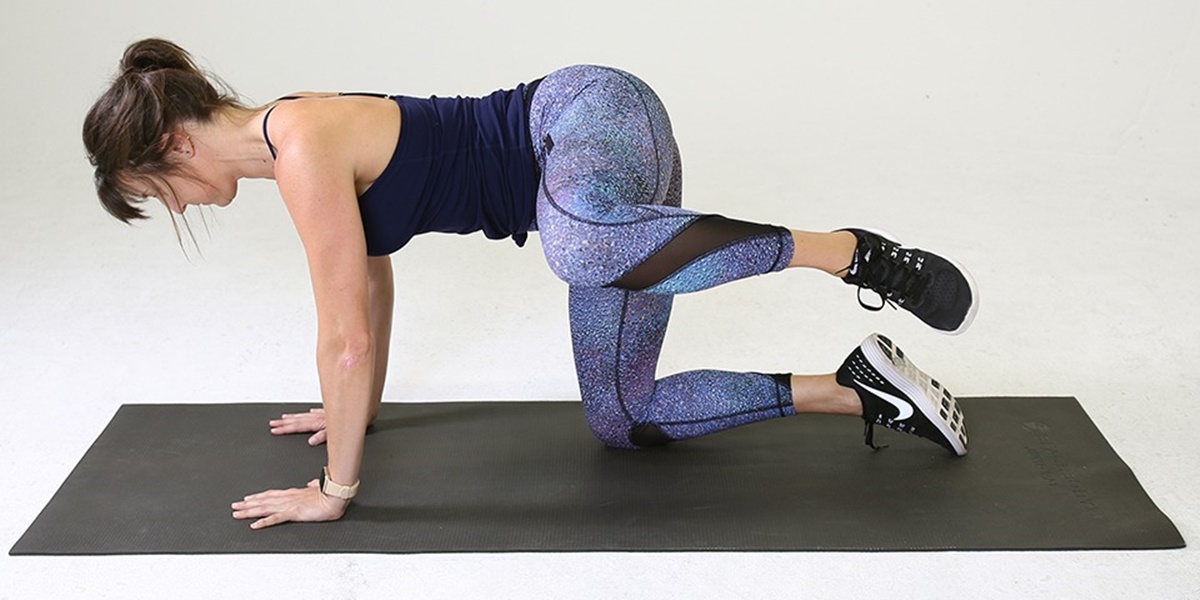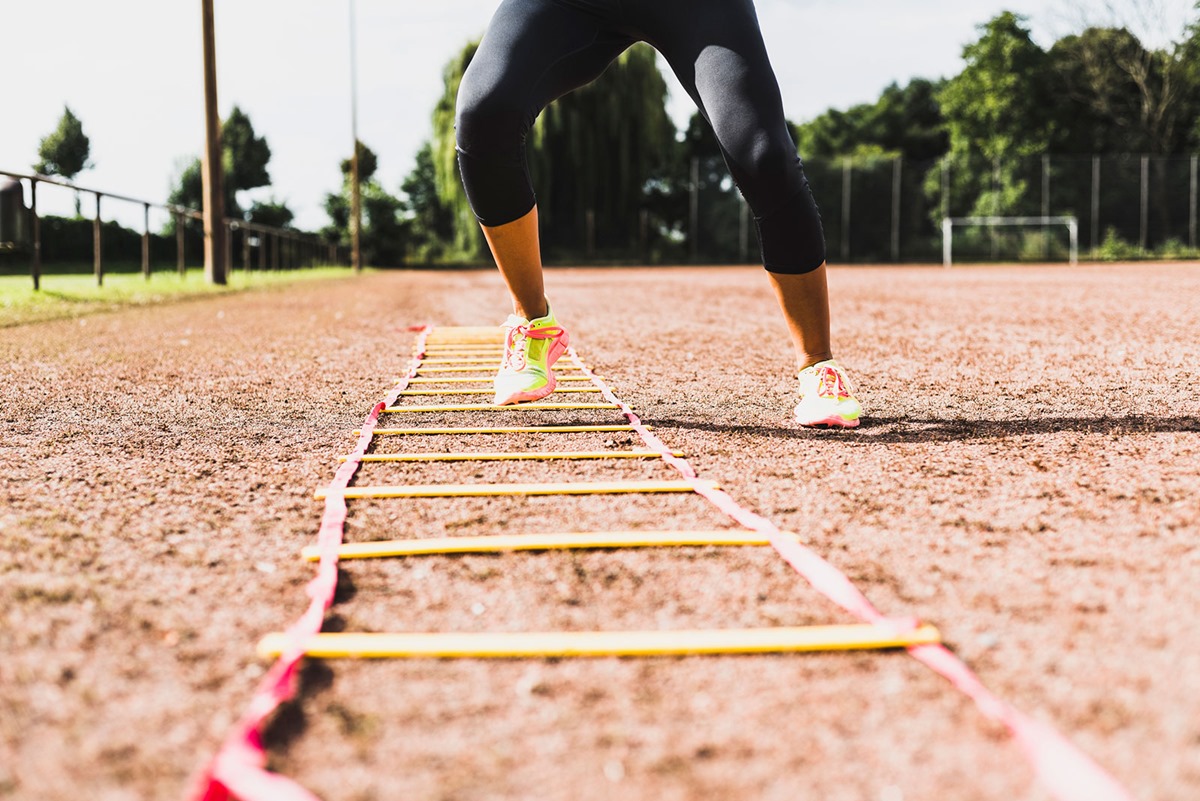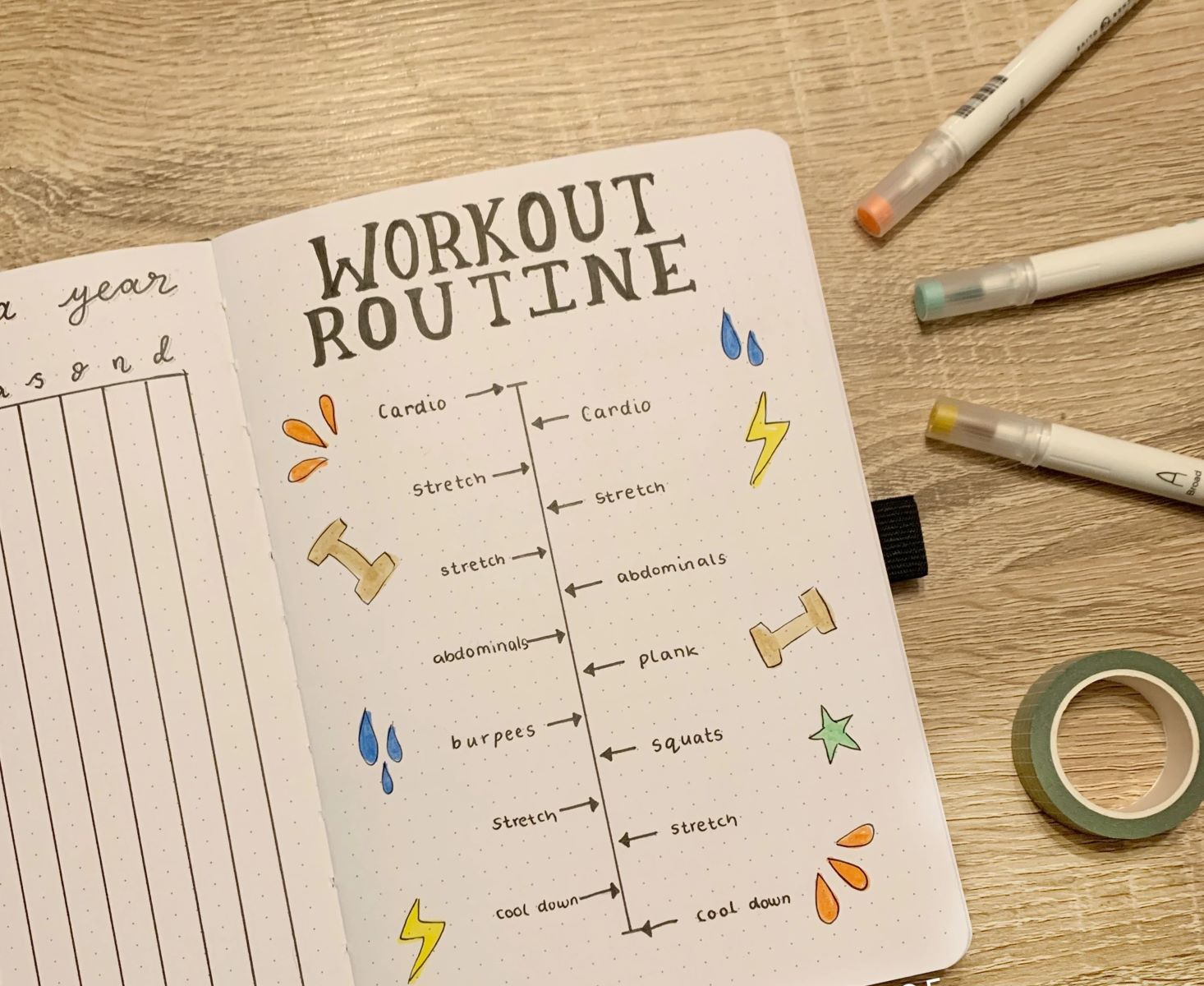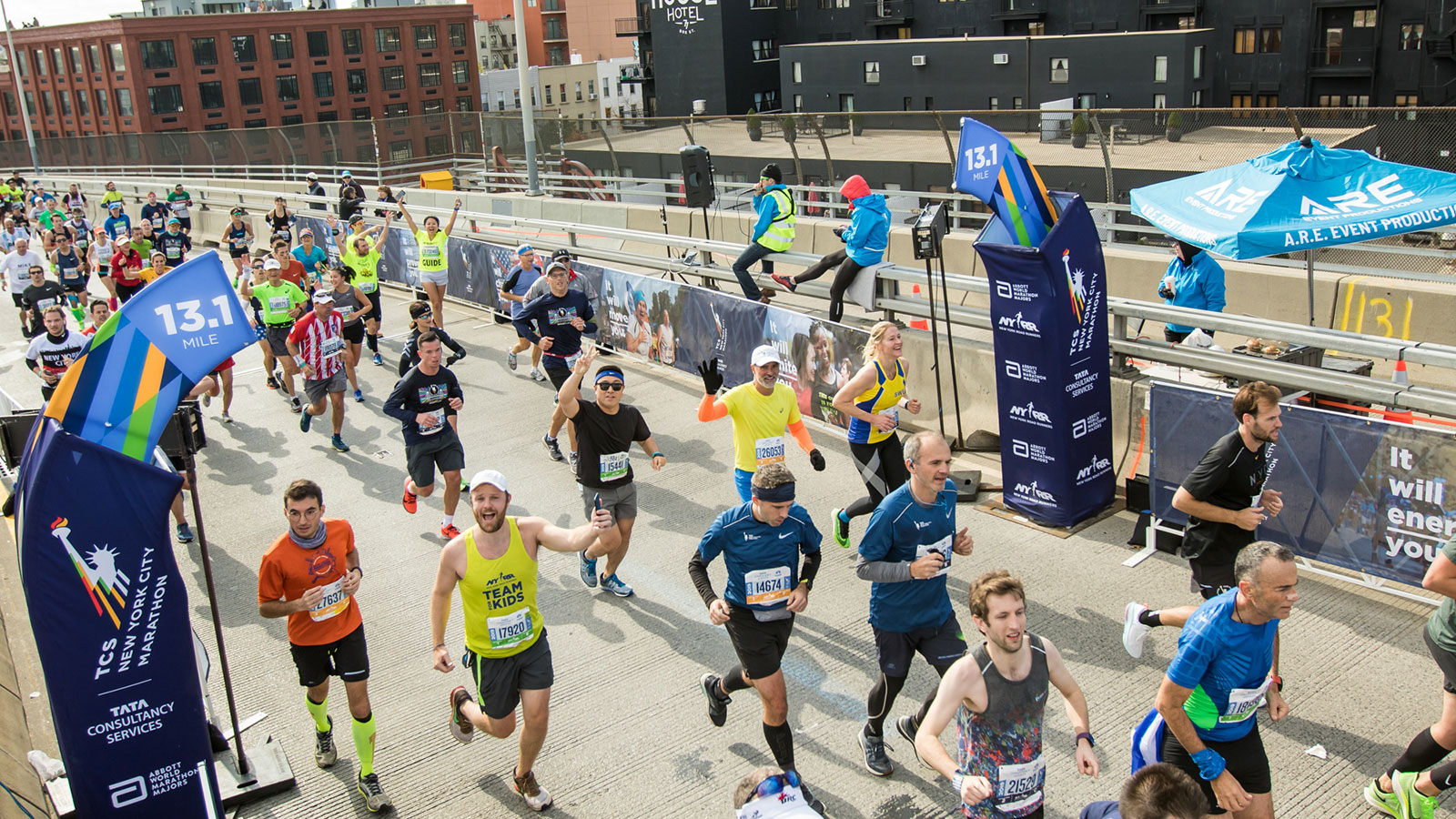

Featured
What Is The Fire Hydrant Exercise
Modified: January 2, 2024
Learn the benefits and technique of the fire hydrant exercise, a featured workout that targets your glutes and hips. Enhance your lower body strength and stability with this effective exercise.
Introduction
The fire hydrant exercise is a popular and effective workout that targets the muscles in your hips, thighs, and glutes. It gets its name from the motion that resembles a dog lifting its leg to urinate on a fire hydrant. This exercise not only helps sculpt and strengthen your lower body muscles, but it also improves your balance, stability, and overall body strength.
Whether you are a seasoned athlete or just starting your fitness journey, incorporating the fire hydrant exercise into your routine can bring numerous benefits. It can be performed by people of all fitness levels and is a great addition to your lower body workout routine.
In this article, we will take an in-depth look at the fire hydrant exercise, including its definition, the muscles it targets, proper form and technique, variations and modifications, as well as safety tips and a sample routine. So grab your mat and let’s dive into the world of the fire hydrant exercise!
Definition of Fire Hydrant Exercise
The fire hydrant exercise, also known as the hip abduction exercise or dog pee exercise, is a simple yet effective movement that targets the muscles in your hips, thighs, and glutes. It gets its name from the motion that resembles a dog lifting its leg to urinate on a fire hydrant.
In this exercise, you start on all fours with your hands directly beneath your shoulders and your knees directly beneath your hips. From this starting position, you lift one leg out to the side, while keeping your knee bent at a 90-degree angle. Your foot should be flexed upwards, parallel to the floor. Imagine you are lifting your leg towards an imaginary fire hydrant.
The fire hydrant exercise primarily engages the gluteus medius, a smaller muscle located on the outer side of the hip, responsible for hip abduction and stability. It also works the gluteus maximus, the largest muscle in the buttocks, as well as the hip adductors, which are the muscles that bring the leg towards the midline.
This exercise can be performed with just your body weight, or you can add resistance by using ankle weights or resistance bands. By strengthening these muscles, you can improve your overall lower body strength, stability, and balance, which can enhance your performance in various sports and activities.
The fire hydrant exercise is a versatile movement that can be incorporated into your warm-up routine, lower body strength training, or even as a part of your core workout. It is a valuable exercise to include in your fitness regimen, as it targets specific muscles that are often neglected in traditional lower body exercises such as squats or lunges.
Now that we have a clear understanding of what the fire hydrant exercise is, let’s explore the amazing benefits it can bring to your fitness journey.
Benefits of Fire Hydrant Exercise
The fire hydrant exercise offers a range of benefits for both your physical fitness and overall well-being. Incorporating this exercise into your workout routine can yield the following advantages:
- Targeted Muscle Strengthening: The fire hydrant exercise primarily targets the gluteus medius, gluteus maximus, and hip adductors. By strengthening these muscles, you can improve your hip stability, enhance lower body strength, and promote proper alignment.
- Improved Hip Mobility: Performing the fire hydrant exercise helps increase the range of motion in your hip joints. This can be especially beneficial for individuals who spend a significant amount of time sitting or have sedentary lifestyles.
- Enhanced Core Stability: The fire hydrant exercise requires engagement of your core muscles to maintain stability and proper form. This helps strengthen your core, contributing to improved balance and overall body stability.
- Increased Glute Activation: This exercise specifically targets the glute muscles, which are crucial for movements such as walking, running, and climbing stairs. Strengthening the glutes can lead to improved athletic performance and reduced risk of injuries.
- Improved Balance and Coordination: The fire hydrant exercise challenges your balance and coordination as you lift and stabilize your leg to the side. Consistent practice can enhance your proprioception and reduce the risk of falls or other balance-related accidents.
- Functional Fitness Benefits: Strong hips and glutes are essential for everyday activities such as bending, lifting, and carrying. By targeting these muscles with the fire hydrant exercise, you can improve your functional fitness and make daily tasks easier and more efficient.
- Versatility and Accessible: The fire hydrant exercise can be modified to suit different fitness levels and is accessible to individuals of all ages. It can be performed without any equipment, making it a convenient exercise that can be done at home or in the gym.
By incorporating the fire hydrant exercise into your fitness routine, you can enjoy these benefits and improve your overall physical well-being. Now that we understand the advantages, let’s move on to the specific muscles targeted by this exercise.
Muscles Targeted by Fire Hydrant Exercise
The fire hydrant exercise is an excellent way to target and strengthen specific muscles in your lower body. It primarily focuses on the following key muscles:
- Gluteus Medius: The gluteus medius is located on the outer side of your hip and is responsible for hip abduction, which is the movement of your leg away from the midline of your body. It plays a crucial role in stabilizing the hips during walking, running, and other lower body movements. By targeting the gluteus medius with the fire hydrant exercise, you can improve your hip stability and prevent potential imbalances.
- Gluteus Maximus: The gluteus maximus is the largest muscle in your buttocks and is involved in hip extension, which is the movement of your leg backward. It contributes to the power and strength of movements such as jumping, running, and climbing stairs. The fire hydrant exercise helps activate and strengthen the gluteus maximus, leading to improved lower body strength and power.
- Hip Adductors: The hip adductors are a group of muscles located on the inner side of your thigh. They are responsible for bringing your leg back towards the midline of your body. Although the primary focus of the fire hydrant exercise is on hip abduction, the hip adductors also play a supportive role during the movement by stabilizing the leg. Engaging these muscles can improve their strength and stability.
By targeting and strengthening these muscles, the fire hydrant exercise helps improve your overall lower body strength, stability, balance, and posture. Additionally, developing strong gluteal muscles can help alleviate lower back pain and reduce the risk of injuries in the hips and knees.
Now that we’ve explored the muscles targeted by the fire hydrant exercise, let’s move on to the proper form and technique to ensure maximum effectiveness and safety.
Proper Form and Technique for Fire Hydrant Exercise
To get the most out of the fire hydrant exercise and minimize the risk of injury, it’s important to master the proper form and technique. Follow these steps to perform the exercise correctly:
- Starting Position: Begin on all fours with your hands directly beneath your shoulders and your knees directly beneath your hips. Your back should be straight, and your core engaged. This is your starting position.
- Lift the Leg: Keeping your knee bent at a 90-degree angle, engage your core and lift one leg out to the side. Lift your leg as high as you comfortably can while maintaining control and balance. Avoid twisting your hips or arching your lower back during the movement.
- Squeeze the Glutes: At the top of the movement, squeeze your glutes to engage the targeted muscles fully. Focus on contracting the muscles in your outer hip and buttocks. Pause for a moment to feel the contraction.
- Lower the Leg: Slowly lower your leg back to the starting position in a controlled manner. Avoid letting your leg drop or swing, as this reduces the effectiveness of the exercise. Maintain stability through your core and keep your upper body stable throughout the movement.
- Repeat on the Other Side: After completing the desired number of repetitions on one side, switch to the other leg and perform the same sequence of movements.
Remember, quality is more important than quantity when performing the fire hydrant exercise. Focus on maintaining proper form and engaging the targeted muscles throughout the movement. If you’re new to this exercise, start with a few repetitions on each leg and gradually increase as you progress.
It’s also important to listen to your body and make modifications as necessary. If you experience any discomfort or pain, reduce the range of motion or consult a fitness professional for guidance.
Now that we’ve covered the proper form and technique, let’s explore some variations and modifications of the fire hydrant exercise to add variety to your routine.
Variations and Modifications of Fire Hydrant Exercise
The fire hydrant exercise can be modified and varied to suit different fitness levels and target specific muscle groups. Here are some variations and modifications you can try:
- Resistance Bands: Amp up the intensity of the exercise by incorporating resistance bands. Secure a band around your thighs, just above your knees, to add resistance and challenge your muscles.
- Ankle Weights: If you want to add more resistance to the movement, you can wear ankle weights. Start with a light weight and gradually increase as you get stronger.
- Mini Band Walks: Place a resistance band around your ankles and perform side steps (also known as mini band walks) while in the fire hydrant position. This targets the gluteus medius and helps improve hip strength and stability.
- Fire Hydrant Plank: Begin in a high plank position, with your hands directly beneath your shoulders and your feet hip-width apart. While maintaining a stable plank position, lift one leg out to the side in a fire hydrant motion. This variation adds a core stability challenge to the exercise.
- Slow and Controlled: Focus on slowing down the movement and emphasizing control. This helps intensify the muscle engagement and increases the time under tension for greater muscle activation.
- Single-Leg Fire Hydrant: Instead of using both legs, perform the fire hydrant exercise on one leg at a time. This variation increases the difficulty and places more emphasis on balance and stability.
Remember, it’s important to choose variations and modifications that align with your current fitness level and goals. Start with simpler variations and gradually progress to more challenging ones as you build strength and control.
Exploring different variations and modifications of the fire hydrant exercise not only adds variety to your workout routine but also targets different muscle groups, ensuring a well-rounded lower body training. Now that we’ve covered the variations, let’s discuss some precautions and safety tips to keep in mind while performing the fire hydrant exercise.
Precautions and Safety Tips for Fire Hydrant Exercise
While the fire hydrant exercise is generally safe for most individuals, it’s important to keep the following precautions and safety tips in mind to prevent injury and get the most out of your workout:
- Start with Proper Warm-Up: Before performing the fire hydrant exercise or any other workout, it’s essential to warm up your muscles and joints. Engage in dynamic stretches or light cardio to increase blood flow and prepare your body for exercise.
- Focus on Proper Form: Maintain proper form throughout the exercise to prevent strain or injury. Keep your back straight, core engaged, and avoid arching your lower back. Additionally, ensure that you are lifting your leg to the side without rotating your hips.
- Engage the Targeted Muscles: Concentrate on engaging the targeted muscles, specifically the gluteus medius, gluteus maximus, and hip adductors. Focus on squeezing your glute muscles at the top of the movement for maximum activation.
- Do Not Rush: Perform the fire hydrant exercise in a slow and controlled manner. Avoid any jerky or sudden movements that can put unnecessary stress on your joints and muscles.
- Listen to Your Body: Pay attention to any discomfort, pain, or unusual sensations during the exercise. If you experience any pain, stop the exercise and consult a healthcare or fitness professional for guidance.
- Gradually Increase Intensity: If you’re a beginner or returning to exercise after a break, start with simpler variations and gradually increase the intensity and difficulty level as you build strength and control.
- Modify as Needed: If you have any existing injuries or conditions that may affect your ability to perform the fire hydrant exercise, make necessary modifications. You can decrease the range of motion or consult a fitness professional for alternative exercises that suit your needs.
- Breathe Properly: Remember to breathe throughout the exercise. Inhale during the lowering phase and exhale as you lift your leg to the side.
- Stay Hydrated: Drink plenty of water before, during, and after your workout to stay hydrated and maintain optimal performance.
- Consult a Professional: If you’re unsure about your form or have any concerns about performing the fire hydrant exercise, consider working with a certified fitness professional who can provide guidance and ensure proper technique.
By following these precautions and safety tips, you can minimize the risk of injury and maximize the benefits of the fire hydrant exercise. Now let’s move on to a sample fire hydrant exercise routine that you can incorporate into your lower body workout.
Sample Fire Hydrant Exercise Routine
Incorporating the fire hydrant exercise into your workout routine can be done in many ways. Here’s a sample routine that targets your lower body and helps strengthen the muscles involved in the fire hydrant exercise:
Warm-Up:
- 5-10 minutes of light cardio activity, such as jogging in place or brisk walking, to raise your heart rate and warm up your muscles.
- Dynamic stretches to loosen up the joints and prepare your body for movement. Include exercises like leg swings, hip circles, and knee raises.
Main Workout:
Perform 3 sets of 12-15 repetitions for each exercise. Rest for about 30 seconds to 1 minute between sets. Adjust the resistance or repetitions based on your fitness level and goals.
- Fire Hydrant Exercise: Start on all fours, complete 12-15 repetitions on one leg, then switch to the other leg. Focus on maintaining proper form and engaging the targeted muscles throughout the movement.
- Bodyweight Squats: Stand with your feet shoulder-width apart. Lower your body into a squat position by bending your knees and pushing your hips back. Return to the starting position and repeat for 12-15 repetitions.
- Walking Lunges: Take a step forward with your right foot and lower your body into a lunge position, with both knees forming 90-degree angles. Push off your right foot and bring your left foot forward to perform the next lunge. Complete 12-15 lunges on each leg.
- Glute Bridge: Lie on your back with your knees bent and feet flat on the ground. Push through your heels to lift your hips off the ground, squeezing your glutes at the top. Lower your hips back to the starting position and repeat for 12-15 repetitions.
Cool-Down:
- 5-10 minutes of gentle stretching, focusing on the muscles targeted during the workout, such as the hips, glutes, and thighs.
- Deep breathing exercises to relax and allow your body to recover.
This sample routine is just one example of how you can incorporate the fire hydrant exercise into your lower body workout. Feel free to adjust the exercises, repetitions, and resistance based on your fitness level and preferences. Remember to listen to your body and modify the routine as needed.
Now that we’ve explored the sample routine, let’s wrap up this article by highlighting the key takeaways and benefits of the fire hydrant exercise.
Conclusion
The fire hydrant exercise is a versatile and effective workout that targets the muscles in your hips, thighs, and glutes. By incorporating this exercise into your fitness routine, you can experience numerous benefits, including targeted muscle strengthening, improved hip mobility, enhanced core stability, increased glute activation, improved balance and coordination, functional fitness benefits, and accessibility.
To perform the fire hydrant exercise with proper form and technique, remember to start in the all-fours position, lift one leg out to the side while keeping your knee bent at a 90-degree angle, and squeeze your glutes at the top of the movement. You can modify the exercise by adding resistance bands, ankle weights, or incorporating mini band walks. Additionally, be sure to prioritize safety by warming up properly, focusing on proper form, listening to your body, and consulting a professional if needed.
A sample fire hydrant exercise routine can include exercises such as the fire hydrant exercise itself, bodyweight squats, walking lunges, and glute bridges. Remember to adjust the resistance and repetitions based on your fitness level and goals.
Incorporating the fire hydrant exercise into your lower body workout can bring about significant improvements in your lower body strength, stability, and overall physical fitness. So, get ready to enhance your workout routine and achieve your fitness goals by incorporating this fun and effective exercise into your training repertoire today!








